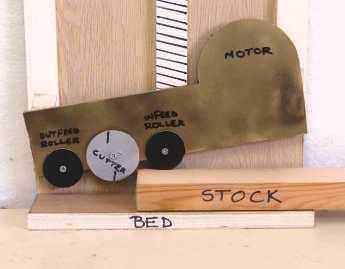
Hi
New here and this is my first post. I'm looking for some advice as I got a brand new thicknesser the Triton TPT125 and I'm getting about 2.5 to 3in of snipe at both Ends of the wood so looking to minimize this.
This next one is strange to me but I ran some redwood through the machine and some went through fine but but a couple of the boards seemed to get stuck an I had to pull them through the machine but they where coming out with really deep snipe and black rubber transfer from what I can only assume is from the rollers any ideas why this is happening???
Thanks



































